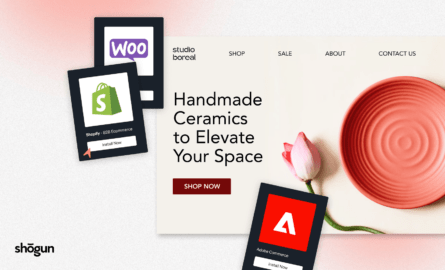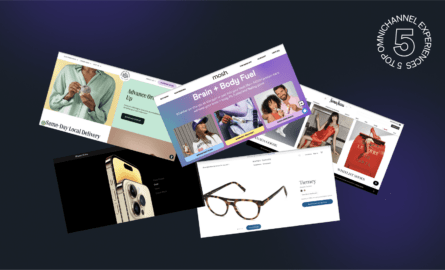4 Big Signs Your Brand Has Outgrown Your Custom Shopify Theme

So your scaling ecommerce brand has paid for a custom Shopify theme; only now, after you’ve implemented it, it’s not doing everything you wanted it to do—or thought it would.
Whether this means you’re still creatively limited, it’s not performing fast enough, or you need to work with developers to make even the tiniest of changes…it could be time to consider your options.
But it’s not always easy to tell if your brand has outgrown a custom theme—or how to proceed once you know it’s hindering further store growth.
Today, you’ll learn the telltale signs your brand is ready for a different solution and why growing ecommerce brands are looking to headless commerce as an answer to theme woes.
How to know you’ve reached the limits of a custom Shopify theme
As your business evolves, so does your vision for your ecommerce experience. What once worked for your product catalog and how you needed to merchandise might not be ticking all the boxes anymore—and that’s ok!
The important thing is to recognize when you’ve reached the conversion potential of one solution and to quickly understand your other options.
Here are a few telltale signs your brand is ready for something besides tweaks to a theme to elevate your owned channel.
1) Your custom Shopify theme is still slow-loading
With site speed, slow and steady doesn’t win the race.
Did you know that mobile sites that load in two seconds or less have a 15% higher conversion rate on average?
Whether mobile or desktop, your ecommerce store needs to load in under two seconds. Top brands are looking at sub-second. Anything less and you’re leaving conversions on the table.
But to accommodate for performance, brands often make the mistake of tradeoffs to design (a key aspect in differentiation and conversions):
“The importance of site speed is increasingly becoming more understood, but at the expense of overshadowing design’s value on buying behavior. More and more brands are compromising design and customer experiences to boost performance.” — Scott Knight, the CEO of Alpha Omega Agency (a Certified Shogun Agency)
The bottom line: Customers don’t stick around on a slow site to purchase. But you need to balance making your storefront fast while displaying sophisticated visual merchandising. You can’t trade one or the other.
Moreover, with site speed being part of Google’s search criteria, a slow custom theme will impact how your brand appears in the SERP.
Of course, you can optimize a custom Shopify theme to the best of your ability. But no matter how many manual tweaks you make (think compressing images, minifying code throughout, and using a Content Delivery Network), a custom theme will never keep pace with the speed of a progressive web app (PWA).
Overall, forward-thinking brands are starting to explore more innovative tech before reaching for a custom theme, especially when it comes to speed and pushing their Shopify stores further:
“Before, we had a standard site that had tech debt from third parties, apps, and themes […] It boiled down to: ‘Do we go with a fresh start and a new theme? Or do we take it to the next level with a progressive web app?’ And a progressive web app, being in a serverless environment, has the speed we wanted. It’s unrivaled.” — Ilan Levine, Head of Technology & Digital Product, TULA Skincare
#cta-paragraph-fe#Read the case study on TULA Skincare’s journey to headless commerce with Shogun Frontend.
2) Your ecommerce team doesn’t have efficient workflows
What’s better than a lightning-fast ecommerce site? A lightning-fast ecommerce site that helps your team get more done to impact revenue—without so much developer help.
Relying on developer timelines for quick changes to your custom Shopify theme means you can’t be as agile. Inefficient content creation workflows cause you to miss out on additional revenue.
For example, if your team wants to run a flash sale the week before BFCM (as determined by insights from your ecommerce analytics), but you’re working around dev timelines and limited site capabilities, your chance at a hyper-timely sales week is gone.
What’s more, even the changes you can make yourself can be risky. Frontend changes can disrupt backend functionality inadvertently when the backend and frontend are together. This can slow you down even more.
A change to checkout for upselling may take your checkout down entirely if it’s not correctly scoped.
If your non-technical team members cannot update your custom theme without development resources, you might question how much farther your investment in a custom theme will take your business.
#cta-visual-fe#<cta-title>Ready to exceed the limits of a custom theme?<cta-title>See how Shogun Frontend can help. Learn more
3) Your CMS feels a little piecemeal
With a custom Shopify theme, it’s not uncommon for brands to run into content management issues. The site and its day-to-day creation can become a bit of a Frankenstein.
For example, for some merchants using custom Shopify sites, part of the site is controlled by the custom theme, while a page builder application controls other parts built out for new modules. This can make the store feel disjointed to team members making ongoing changes in your CMS.
Whether you can’t add the content you want without impacting site performance or getting content on the site requires significant hoop-jumping or fumbling around a messy CMS—as your brand grows, you may find your custom Shopify theme alone no longer accommodates your needs.
4) Your visual merchandising capabilities are limited
Creating an engaging shopping experience for customers is a big part of differentiating in the crowded DTC space.
But it can be tricky to get from idea to execution with a custom Shopify theme.
Not only do you need to consider how adding rich visual merchandising or creative interactions will impact your site performance, but how it’s getting added in the first place (likely more code).
You also need the new visual merchandising scoped to play nicely with all your existing Shopify-click-to-install integrations.
Adding dynamic ecommerce features for better upsell and cross-sell capability requires scoping from a developer or Shopify agency—which can stall your team’s efforts to impact revenue in the short term.
Scaling brands are looking for ways to impact revenue with better site interactions without needing to scope out every little detail for experiments. You want to be able to test your ideas for more conversions at scale.
Why brands who have outgrown Shopify custom themes are choosing headless commerce
What should you do if the above telltale signs feel too familiar?
For some brands, a custom Shopify theme will help to a point. But for others scaling especially fast, you’ll need an ecommerce solution that exceeds what custom themes offer.
Many brands in this situation are turning to headless commerce for complete control and differentiation.
Headlessness offers creative and UX flexibility that isn’t limited by parameters within a custom theme. Instead, it empowers non-technical ecommerce team members to bring outside-the-box ideas to life on their terms.
Here are some specific reasons you might turn to headless commerce:
1. Unparalleled site speed and performance
A big component that makes headless commerce appealing to scaling brands is the unparalleled speed you can achieve with this kind of site architecture. And with a one-second delay in page load time potentially impacting conversion rates by up to 20%, speed is a top priority.
Building a progressive web app (PWA) helps you achieve sub-second load time across your site—whether shoppers are browsing on mobile or desktop. PWAs load content entirely differently than a typical ecommerce site.
Just look at this comparison of BrunoMD’s previous site and their new PWA—built by Certified Shogun Frontend agency, Electric Enjin:
The best part? Your customers won’t know your site is any different—aside from how fast they can go from page to page.
#cta-mini-fe#Looking for inspiration from sites with blazing-fast site performance and stellar design? Look no further. 15 stunning headless commerce examples
2. Exceed design and UX limitations
Brands turn to custom themes to create rich ecommerce experiences that stand out from cookie-cutter templates. But even custom themes have creative restrictions.
Creating that Apple-like experience with rich merchandising elements—like smooth scrolling, high-resolution imagery, and crisp auto-playing background videos—calls for a supportive website architecture that doesn’t compromise performance.
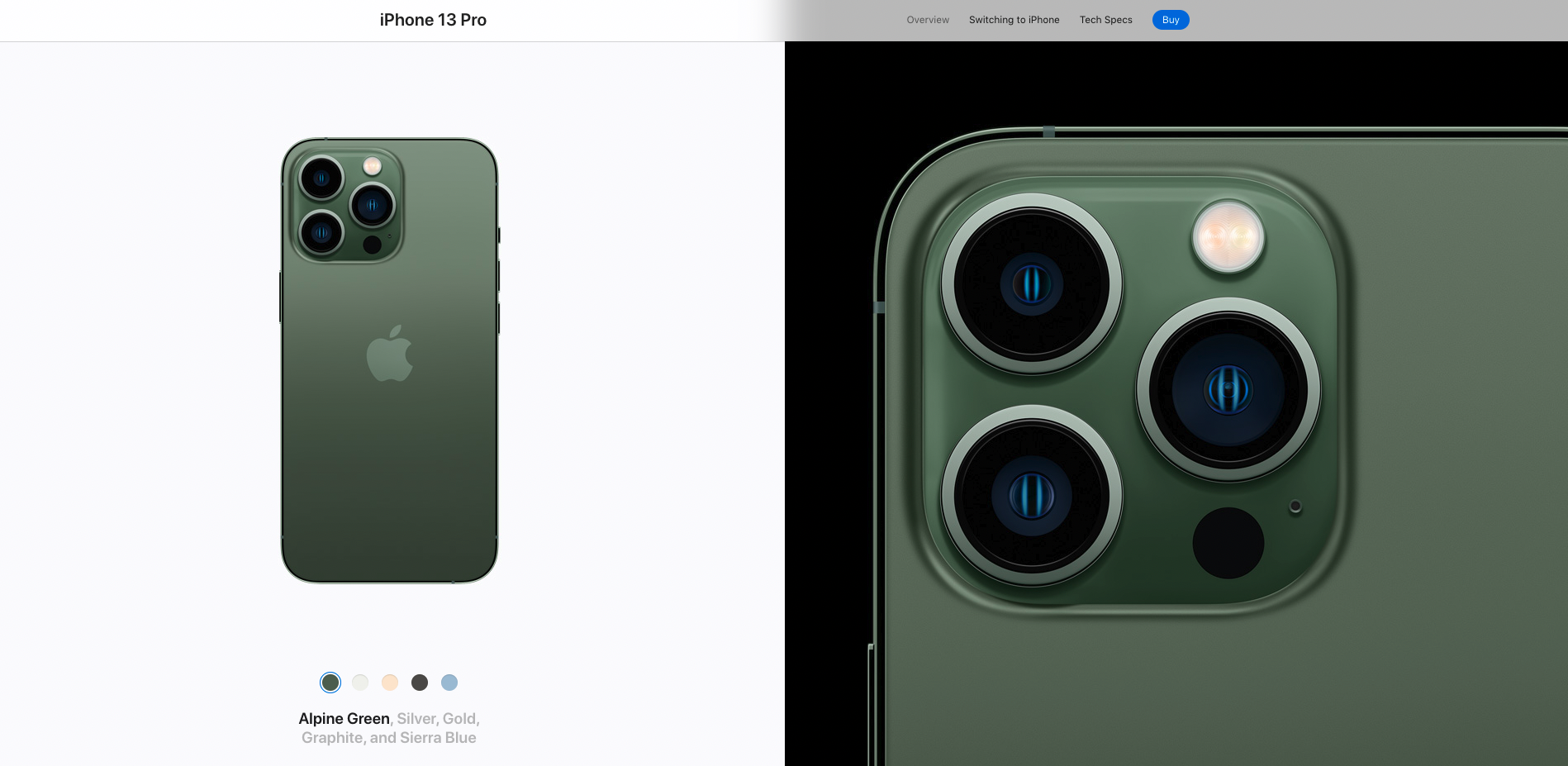
Plus, with an all-in-one frontend platform like Shogun Frontend, there’s no need to reinvent the wheel each time you want to add a new visual or reskin a page. Brands (or an agency partner if you’re working with one) can build stunning visual elements in a fraction of the time with adaptable, reusable components.
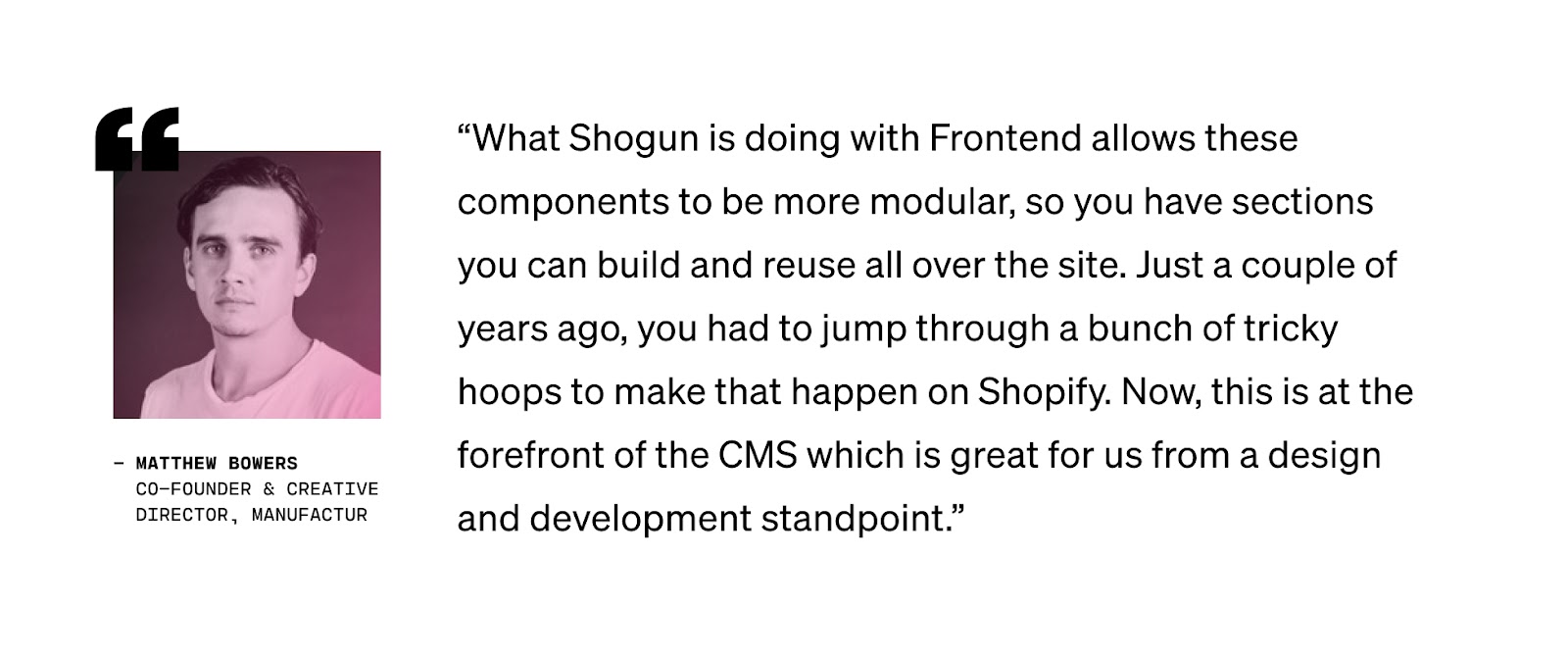
3. Scalability
Headless sites are primed to handle an uptick in site activity—like big jumps in traffic resulting from a viral Instagram influencer campaign or a steady burn from growing your brand equity.
How? Headless sites are powered with best-in-breed technology—like a content delivery network (CDN) and headless APIs—designed to withstand large volumes of traffic and activity. With this tech, you don’t have to rely on your backend technology to manage your frontend.
For example, let’s say you want to redesign your site’s presentation layer (frontend). You can easily do this on a headless site without disrupting the back-office functionality of the site, like checkout and shipping.
Shogun Frontend customer, Daring, chose to go headless “early” because they wanted to future-proof their storefront for rapid growth.
Now, the Daring team has the flexibility to expand beyond the design limitations of a Shopify template (think: high-resolution imagery and complex content management), and have increased their pages per session by 25% and sessions with product views by 39.8%.
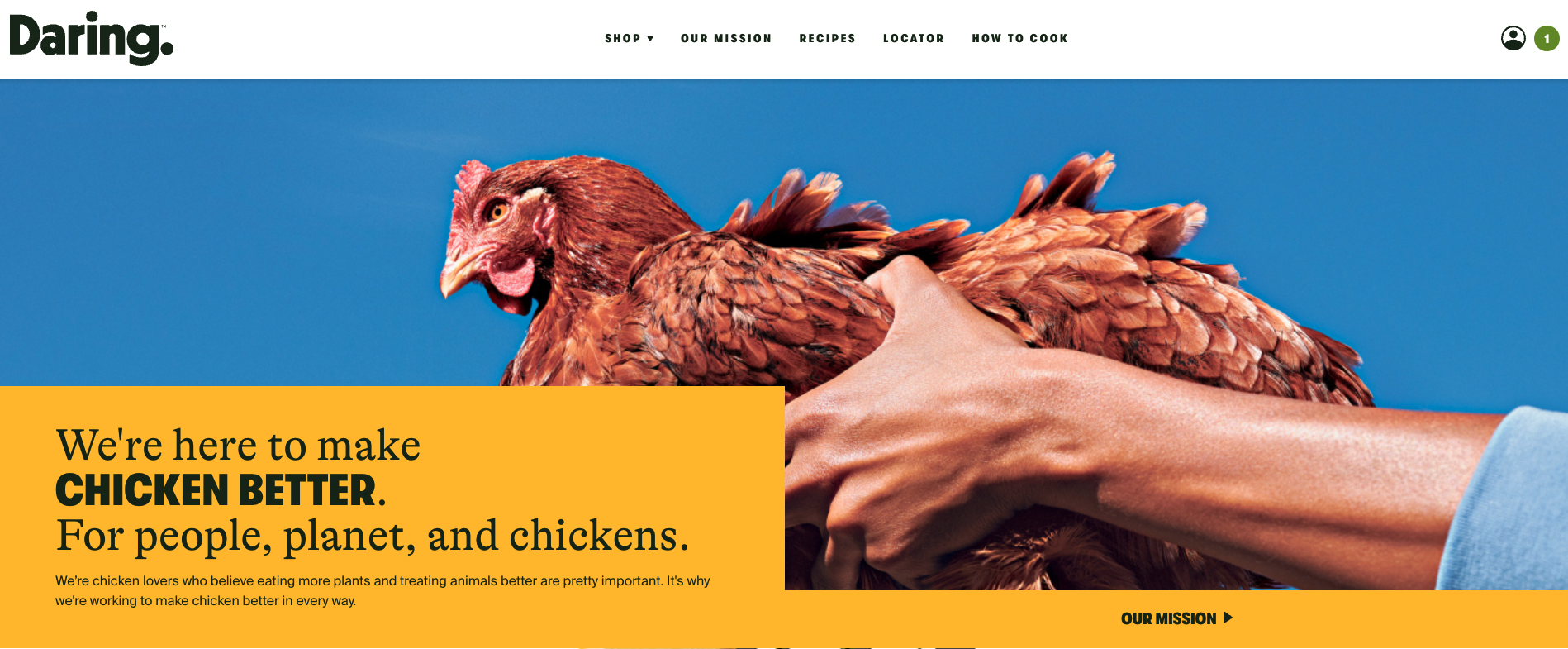
#cta-paragraph-fe#Get the full scoop on why Daring went headless with Shogun Frontend (and how headless impacted their brand for the better!). Read the case study
Custom themes can only get you so far in terms of scalability. Headless commerce offers an alternative to creative flexibility and adaptability.
#cta-visual-fe#<cta-title>Ready to elevate your ecommerce experience?<cta-title>Headless commerce can help you create the exact ecommerce experience your brand envisions—without compromises. Learn more
Examples of headless sites that exceed a custom Shopify theme
Identifying a headless site in the wild isn’t obvious, but you’ll know you’re browsing one compared to a custom theme based mainly on its blazing-fast page-to-page load times.
Here are a few great examples of headless sites and what makes them unique.
OneBlade
Luxury shave brand, OneBlade, relies on visuals and sleek UX elements to convey the quality of their products. With their Shogun Frontend-powered site, they have added several design components to their ecommerce experience, like:
- Smooth background videos
- High-quality imagery throughout the site
- Rich merchandising—like product color toggles
- Pop-out carts that make for easy, uninterrupted shopping
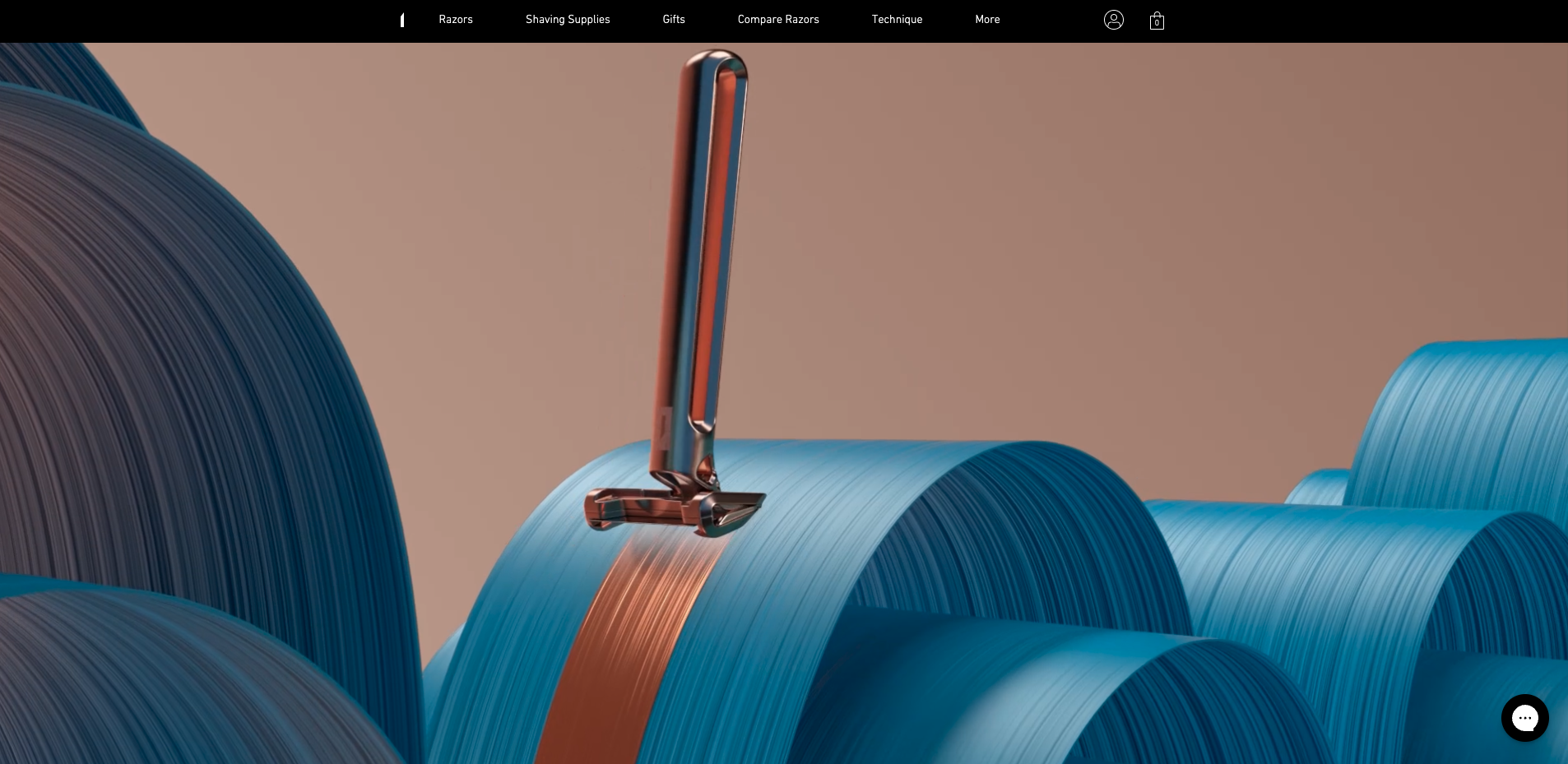
After implementing their headless site, OneBlade increased their active refill subscriptions by 579%.
#cta-paragraph-fe#Read more about OneBlade’s journey to headless commerce.
Kyoku
Shogun Frontend-powered Kyoku.com includes various design and UX elements that make it stand out from other breakfast shake brands, including:
- Stop-motion video on the homepage showing shoppers the ingredients of each shake packet
- Rich product and brand visuals throughout the site make the brand feel elevated
- Quick “subscribe now” buttons make it easy for shoppers to order without leaving the homepage
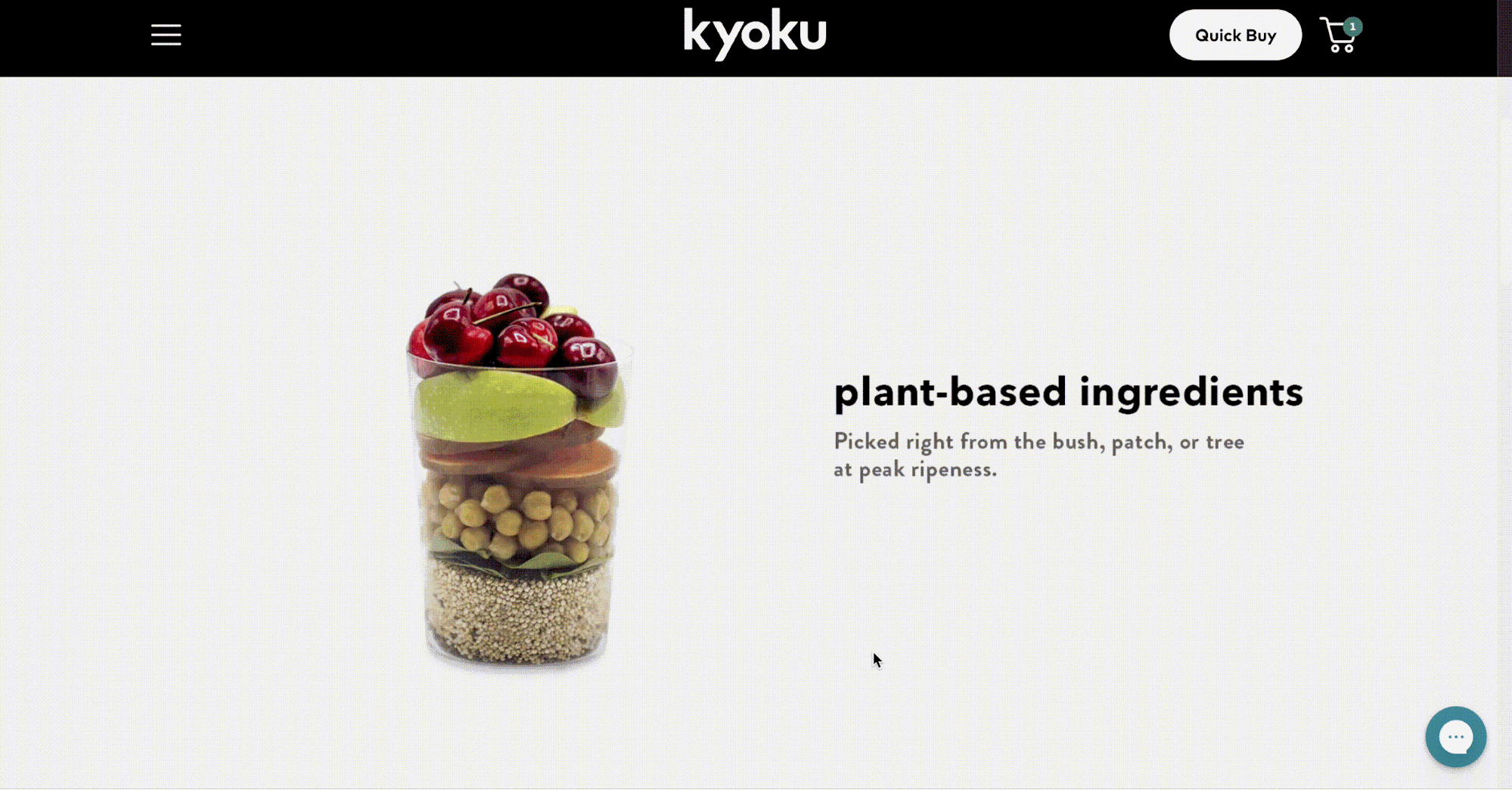
Nomad
You only have to spend a few seconds on Nomad.com to realize this ecommerce experience is nothing like shopping for phone cases or chargers on Amazon or Best Buy.
Nomad’s Shogun Frontend-powered site offers a sophisticated, elevated shopping experience to customers with elements like:
- Product detail and brand videos throughout the site
- Customized product pages that highlight what’s unique about each product
- Engaging shopping features—like toggles that show how a product looks on Day 1 of use versus Day 100
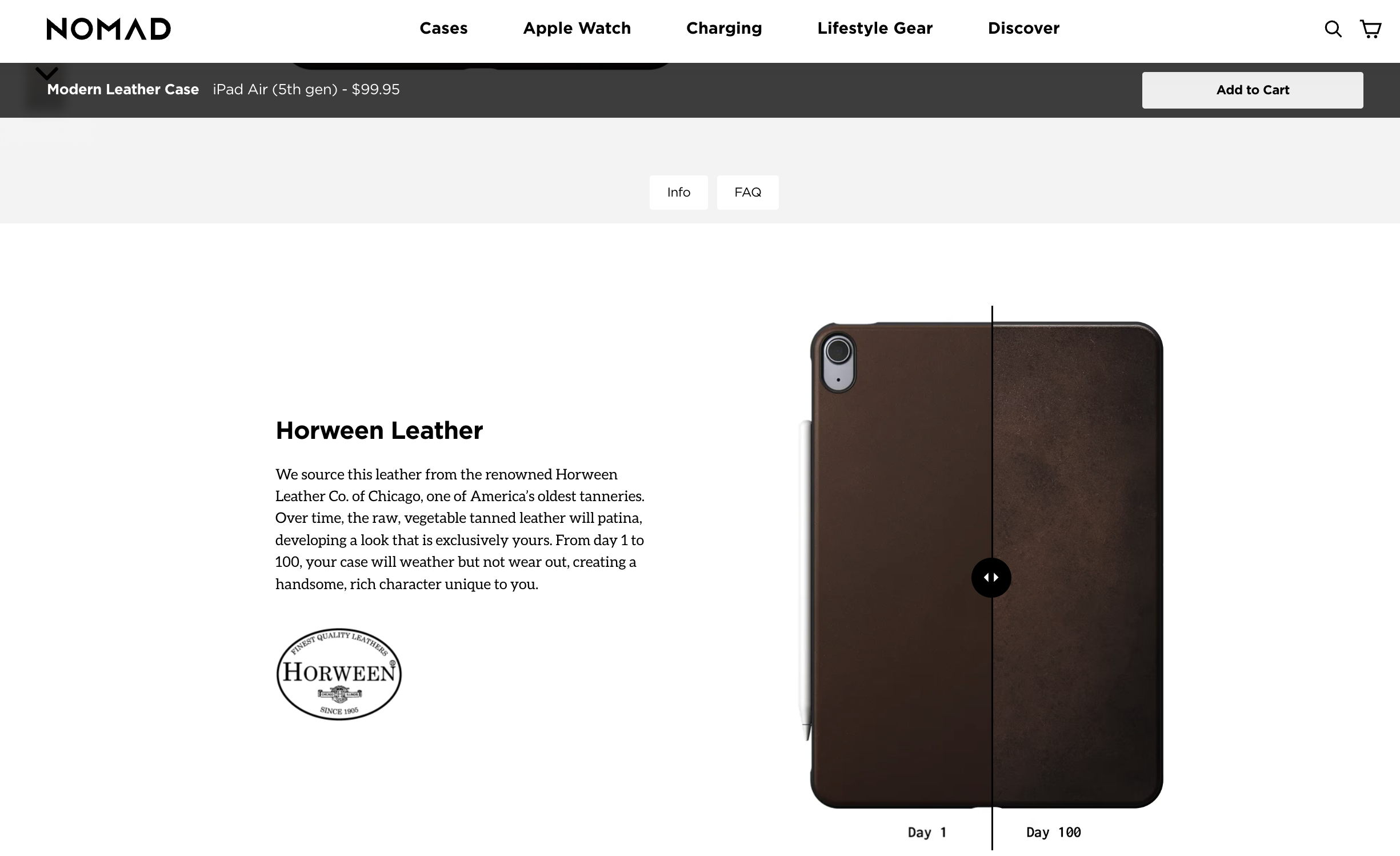
After going headless with an all-in-one frontend platform, Nomad achieved a 25% increase in ecommerce conversion rate and a 25% increase in revenue per session.
#cta-paragraph-fe#Learn more about how going headless impacted business for Nomad. Read the case study
Headless commerce offers creativity without limits
Custom Shopify themes are a great option for some brands, though they can become something you outgrow over time.
For those looking to color outside the lines of what’s possible with a theme headless commerce is a great solution.
Headless sites with their separate frontend presentation layer are made to ebb and flow with how your brand grows. You can stretch your creativity and create dynamic, memorable shopping experiences that keep customers coming back.
#cta-visual-fe#<cta-title>Create the engaging ecommerce experience your brand envisions<cta-title>See how Shogun Frontend can help you build the best (and fastest!) ecommerce experience possible. Learn more

Kaitlyn Ambrose
Kaitlyn works on all things content at Shogun. ⚡


